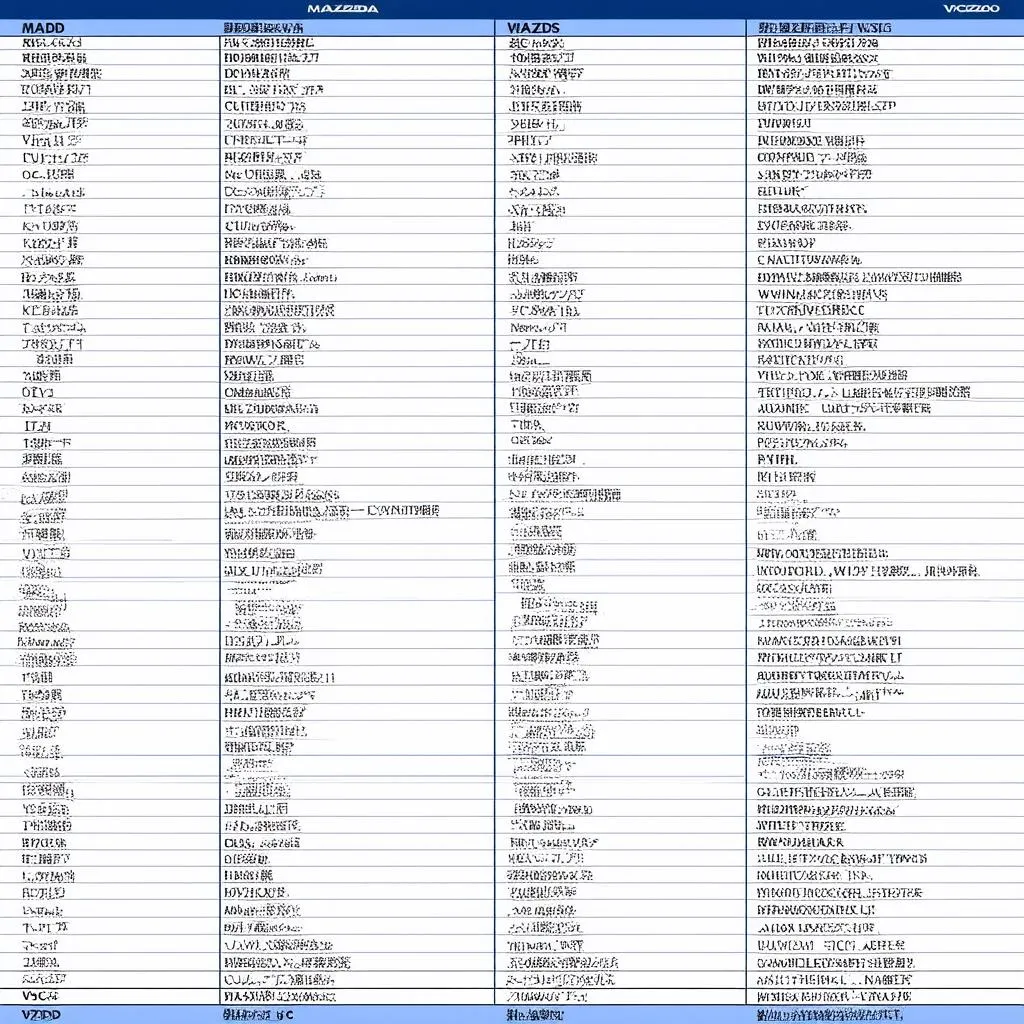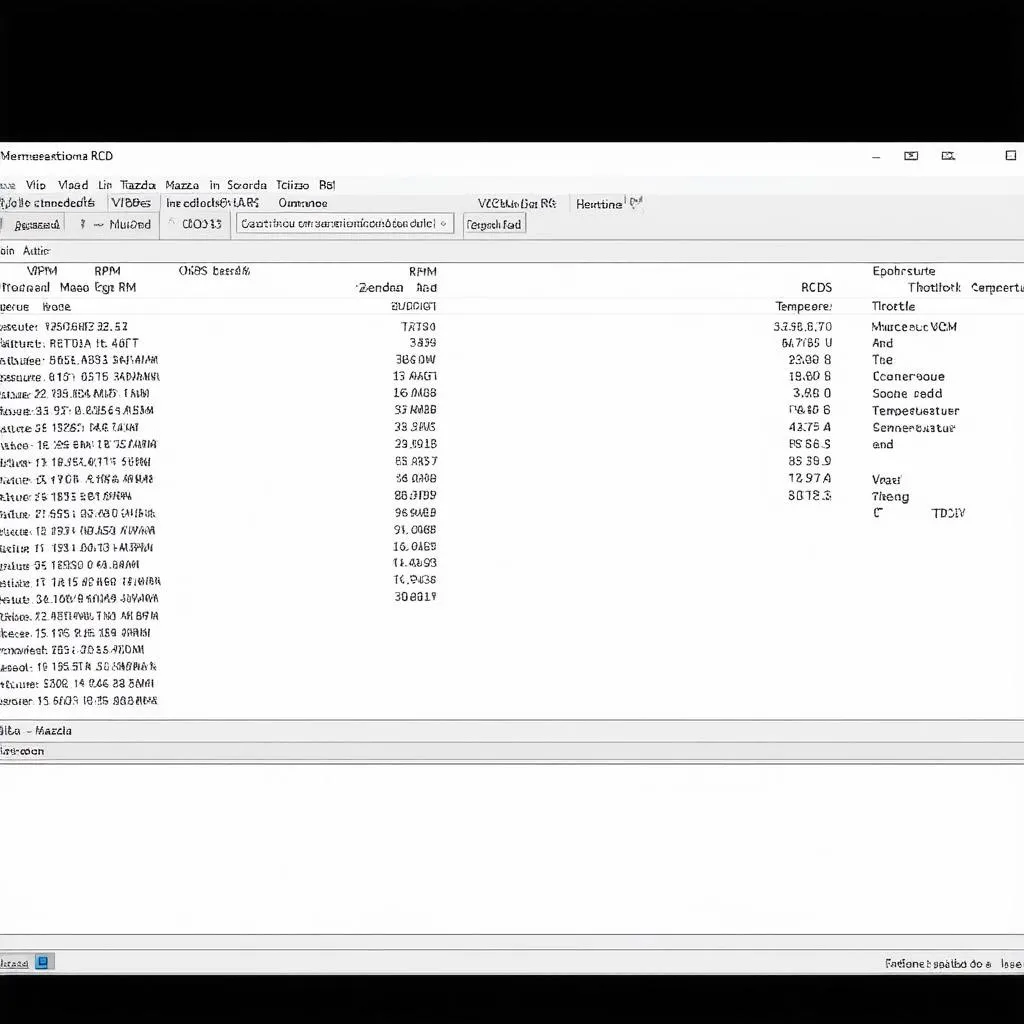Vehicle diagnostics have become increasingly sophisticated, allowing mechanics and car enthusiasts to delve deeper into their cars’ systems than ever before. For Mazda owners, the VCDS (Vag-Com Diagnostic System) software has emerged as a powerful tool. This article explores the intricacies of VCDS and its relevance to Mazda vehicles, addressing common questions and concerns.
Understanding VCDS
VCDS, originally developed for Volkswagen Audi Group vehicles, is a diagnostic and reprogramming software. It connects to a car’s onboard computer via a standard OBD-II port, allowing users to access and interpret diagnostic trouble codes (DTCs), view live data streams from various sensors, and even make adjustments to certain vehicle settings.
“The depth of information VCDS provides is invaluable,” says automotive electronics expert, David Thompson, author of “Modern Automotive Diagnostics.” “For technically inclined Mazda owners, it’s a game-changer.”
VCDS and Mazda Compatibility
While VCDS is primarily associated with VAG vehicles, its compatibility extends to a surprising number of other makes, including certain Mazda models. This compatibility stems from the shared use of certain electronic control units (ECUs) and communication protocols.
Important Note: VCDS compatibility with Mazda is not universal. It’s crucial to verify compatibility with your specific Mazda model and year before purchasing or using the software. Referencing the official VCDS website or contacting knowledgeable Mazda communities is recommended.
 Mazda VCDS Compatibility Chart
Mazda VCDS Compatibility Chart
Benefits of Using VCDS for Mazda
For those with compatible Mazda models, VCDS offers numerous advantages:
- In-depth Diagnostics: Go beyond basic OBD-II code readers by accessing manufacturer-specific codes and data, allowing for more precise diagnosis of issues.
- Live Data Monitoring: Observe real-time sensor readings, aiding in understanding system behavior and pinpointing malfunctions.
- Customization and Adaptations: Adjust certain vehicle settings, such as lighting options, convenience features, and even some performance-related parameters (depending on the model).
 Mazda VCDS Live Data Display
Mazda VCDS Live Data Display
Considerations and Precautions
- Compatibility: Ensure your Mazda model is supported by VCDS to avoid potential software conflicts or lack of functionality.
- Technical Knowledge: VCDS provides extensive data that requires a good understanding of automotive systems to interpret correctly.
- Modifications: Altering certain vehicle settings without proper knowledge can impact safety and performance. Proceed with caution and consult reputable sources.
FAQs about VCDS and Mazda
Can I use VCDS to disable my Mazda’s daytime running lights (DRLs)?
Possibly. VCDS offers control over certain lighting functions. However, the specific options available vary depending on the Mazda model and year.
Is it safe to update my Mazda’s ECU firmware using VCDS?
ECU firmware updates should be approached with caution. While VCDS can facilitate updates, it’s crucial to obtain the correct firmware version from trusted sources and follow proper procedures. Incorrect updates can lead to significant vehicle malfunctions.
Conclusion
VCDS provides a powerful suite of tools for Mazda owners seeking a deeper understanding and control over their vehicles. While its compatibility may not encompass all Mazda models, those with supported vehicles can unlock a wealth of diagnostic and customization capabilities.
Remember to prioritize compatibility checks, accurate information, and safe practices when using VCDS. For comprehensive support and guidance, connect with CARDIAGTECH.
